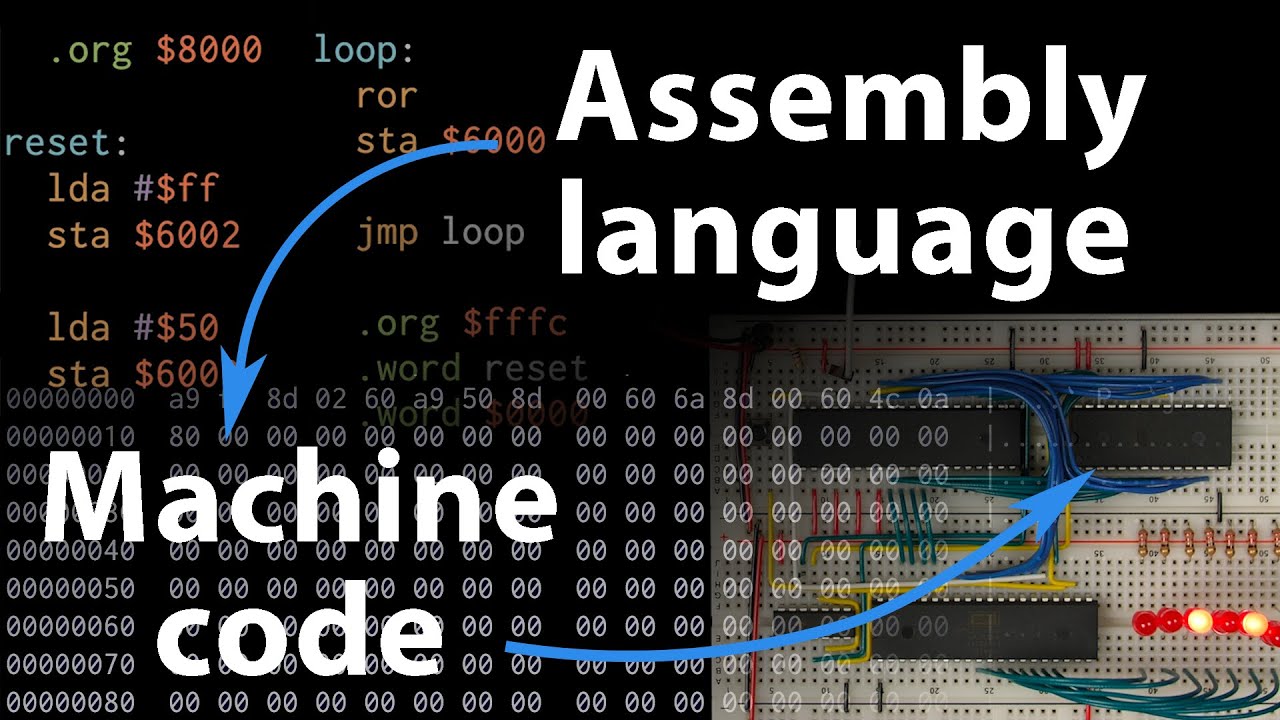Machine code: The language of computers
Published

Basics of machine code: Binary instructions and machine instructions
Machine code is the lowest level of programming languages and consists of binary instructions that are executed directly by a computer's CPU. In this fundamental language, programs are represented as a sequence of machine instructions that instruct the processor to perform specific operations. The machine code is composed of a sequence of 0s and 1s, with each combination representing a specific instruction or operation. These instructions can be many and varied, including instructions to load data from memory, calculations, branches of the program flow and communication with peripheral devices. In machine code, the operations and operands are usually coded in a fixed length, which ensures precise execution of the instructions. Operands can be register values, memory addresses or constants. The basics of machine code are of great importance as they enable an understanding of how computers and processors work. Although machine code is difficult for humans to read, it is the basis for higher programming languages and forms the foundation for all software development and hardware control in the IT world.
The role of the assembler: translation of assembler code into machine code
Assembler is a programming language that serves as an interface between human-readable code and machine code. It enables developers to write code in a form that is understandable to humans, while the assembler translates this code into the corresponding machine instructions. The use of assembler makes low-level programming much easier and increases readability and maintainability compared to pure machine code. The main task of the assembler is to convert the instructions and operands written by the developer into the corresponding binary codes that are understood by the CPU. This is done in a two-stage process in which the assembler first translates the source code into so-called "assembly code" and then, in a further step, converts this assembly code into machine code. In the assembly code, the instructions and operands are easy for humans to understand as they use symbolic designations. For example, a symbol such as "Variable_A" can be used instead of a specific memory address. The assembler then assigns the corresponding memory addresses to these symbols and generates the final machine code. Using an assembler makes low-level software development much easier, as it allows developers to work in a language they can understand, while the assembler takes over the tedious task of translation. This is particularly important in applications that require precise hardware control, such as embedded systems and operating systems.
Understanding machine instructions: Operations and operands
Machine instructions are at the heart of machine code and are crucial to understanding how a computer or processor works. These instructions consist of two main parts: the operation, which specifies what action is to be performed, and the operands, which represent the data or memory addresses to which the operation is applied.
- Operations: The operations are the commands that the processor executes. They include basic actions such as adding numbers, copying data or jumping to another position in the program. Each operation is represented by a unique binary sequence that is recognized by the processor.
- Operands: Operands are the data to which the operations are applied. They can be register values, memory addresses or constants. The number and type of operands vary depending on the operation. For example, addition requires two operands: the two numbers to be added.
Machine instructions can be very simple, such as copying a value from one memory location to another, or very complex, such as performing a multiplication with floating point numbers. The combination of operations and operands enables the execution of a wide range of tasks and forms the basis for the functionality of computers. Understanding machine instructions is essential for low-level developers and engineers, as it enables them to write efficient and precise code that performs specific tasks at the hardware level. This understanding is particularly important in applications such as embedded systems, operating systems and hardware programming.
Machine code vs. high-level languages: A look at programming language diversity
The choice of programming language is a crucial factor in the development of software, and machine code is at the lower end of the spectrum. Compared to high-level languages such as C++, Java or Python, which are easy for humans to read and write, machine code is one of the lowest levels of programming and consists of binary instructions that are executed directly by the hardware. The differences between machine code and high-level languages are significant:
- Readability: Machine code is extremely difficult for humans to understand because it consists of 0s and 1s representing instructions and operands. High-level languages, on the other hand, use human-readable syntax and allow developers to clearly express their intentions.
- Portability: High-level languages are generally portable, as they are independent of the underlying hardware. Machine code is strongly tied to the processor architecture and is therefore not portable.
- Development efficiency: Writing code in high-level languages is faster and more efficient, as developers have to worry less about hardware-related details. Machine code requires precise knowledge of the hardware and is therefore more time-consuming.
- Level of abstraction: High-level languages offer a higher level of abstraction and allow programs to be structured effectively. Machine code, on the other hand, requires detailed control over the hardware.
Despite these differences, machine code still has its justification and relevance. In certain applications, especially in embedded programming and operating systems, the use of machine code is essential to ensure precise hardware control and maximum efficiency. In most other cases, however, high-level languages are preferred as they speed up development and improve code readability.








